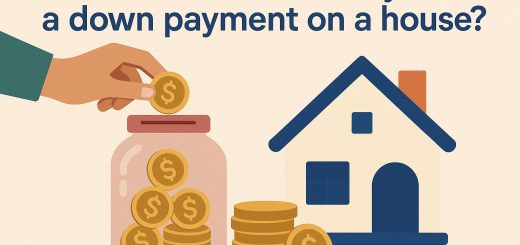What is the 50/30/20 rule for budgeting and saving?
The 50/30/20 rule is a straightforward and effective budgeting strategy that can help individuals manage their finances more efficiently. This rule divides after-tax income into three main categories: needs, wants, and savings or debt repayment. It provides a balanced method to allocate finances without the use of complex financial tools or excessive tracking. By understanding and implementing this rule, individuals can work towards financial stability and meet their financial goals.
Understanding the 50/30/20 Rule
The “50” Percent for Needs
According to this rule, 50% of one’s after-tax income should be dedicated to needs. Needs are essential expenses that are necessary for day-to-day living. These include:
- Housing costs, such as rent or mortgage payments
- Utilities and essential services
- Groceries and basic household goods
- Insurance premiums
- Minimum loan payments
It is crucial to categorize only the genuinely necessary expenses as needs. Discretion should be used to differentiate between needs and wants. Ensure that needs do not exceed the designated 50% of income. Misclassifying expenses can lead to budget imbalances, setting off a chain reaction that complicates financial management.
The “30” Percent for Wants
30% of after-tax income is allocated to wants. Wants are those discretionary expenses that enhance quality of life but are not essential. Examples of wants include:
- Dining out and entertainment
- Hobbies and leisure activities
- Travel and vacations
- Luxury goods and non-essential services
Enjoying life is important, but adhering to this limit can prevent overspending on non-essential items and help maintain a balanced budget. It’s essential to remember that overspending on wants can deplete the resources allocated for savings and hinder debt repayment efforts.
The “20” Percent for Savings and Debt Repayment
The remaining 20% of after-tax income should be directed towards savings and debt repayment. This portion supports financial growth and stability. Key areas to focus on include:
- Building an emergency fund
- Contributing to retirement accounts such as IRAs or 401(k)s
- Saving for future goals, like buying a home or education
- Paying down existing debt more quickly, starting with high-interest debt
An emergency fund is critical as it provides a safety net for unforeseen events like medical emergencies or job loss, thus avoiding the need to rely on credit cards or loans. Debt repayment, particularly high-interest debt, should take precedence since it can otherwise snowball and affect overall financial health.
Benefits of the 50/30/20 Rule
This budgeting rule is beneficial for several reasons. It provides a simple framework that can be easily understood and implemented by those new to budgeting. The division of income into these three categories helps maintain financial discipline, encourages saving, and prevents unnecessary debt accumulation.
Customizable Nature
Despite its simplicity, the rule offers the flexibility to be tailored to different financial situations. For someone in a city with high living costs, the needs category may temporarily increase, as long as the overall structure can be revisited to return to the ideal proportions. Similarly, for someone with minimal debt, more can be allocated to savings or enhancing lifestyle.
Focus on Financial Well-being
The emphasis on savings and debt repayment has a long-term positive impact on financial health. Regular allocation towards savings can lead to substantial wealth accumulation over time, allowing for major investments or providing peace of mind during retirement. In contrast, diligent debt management minimizes financial burdens and stress associated with high-interest obligations.
Implementing the 50/30/20 Rule
Tracking Expenses
To successfully implement the 50/30/20 rule, it’s essential to track expenses meticulously. This starts with calculating one’s after-tax income and then categorizing each expense to ensure it fits within its designated segment. Maintain regular monitoring to adjust allocations as income or expenditure patterns change.
Adapting to Life Changes
As life progresses, financial priorities and challenges may change. Whether faced with an income increase, family expansion, or unemployment, the rule can be adapted by temporarily shifting the percentages to accommodate these changes without losing sight of overall objectives.
Continuous Education
Staying informed about personal finance can aid in better budgeting practices. Whether through books, financial workshops, or online resources, continual learning helps equip individuals with the knowledge to make informed financial decisions and optimize the 50/30/20 rule for personal benefit.
Conclusion
The 50/30/20 rule serves as an effective guideline for managing personal finances. By allocating funds according to designated percentages for needs, wants, and savings, individuals can achieve a balanced and sustainable financial lifestyle. Anyone interested in learning more about this budgeting strategy can explore additional resources available online, such as Bankrate or other financial advice platforms.
This rule, with its roots in simplicity and flexibility, provides a valuable framework for those seeking both short-term financial management and long-term economic well-being. Effective implementation requires discipline, regular evaluation, and willingness to adjust to life’s unpredictable nature.
This article was last updated on: October 17, 2025










